I slightly modified one of the examples above that plots the error or confidence region contours. Now I think it gives the right contours.
It was giving the wrong contours because it was applying the scoreatpercentile method to the joint dataset (blue + red points) when it should be applied separately to each dataset.
The modified code can be found below:
import numpy
import scipy
import scipy.stats
import matplotlib.pyplot as plt
# generate two normally distributed 2d arrays
x1=numpy.random.multivariate_normal((100,420),[[120,80],[80,80]],400)
x2=numpy.random.multivariate_normal((140,340),[[90,-70],[-70,80]],400)
# fit a KDE to the data
pdf1=scipy.stats.kde.gaussian_kde(x1.T)
pdf2=scipy.stats.kde.gaussian_kde(x2.T)
# create a grid over which we can evaluate pdf
q,w=numpy.meshgrid(range(50,200,10), range(300,500,10))
r1=pdf1([q.flatten(),w.flatten()])
r2=pdf2([q.flatten(),w.flatten()])
# sample the pdf and find the value at the 95th percentile
s1=scipy.stats.scoreatpercentile(pdf1(pdf1.resample(1000)), 5)
s2=scipy.stats.scoreatpercentile(pdf2(pdf2.resample(1000)), 5)
# reshape back to 2d
r1.shape=(20,15)
r2.shape=(20,15)
# plot the contour at the 95th percentile
plt.contour(range(50,200,10), range(300,500,10), r1, [s1],colors='b')
plt.contour(range(50,200,10), range(300,500,10), r2, [s2],colors='r')
# scatter plot the two normal distributions
plt.scatter(x1[:,0],x1[:,1],alpha=0.3)
plt.scatter(x2[:,0],x2[:,1],c='r',alpha=0.3)

